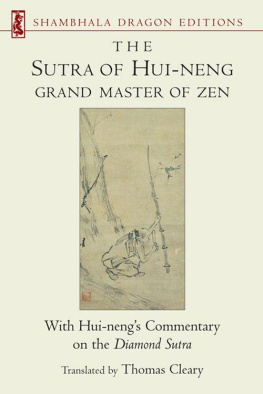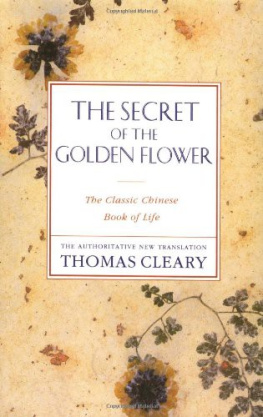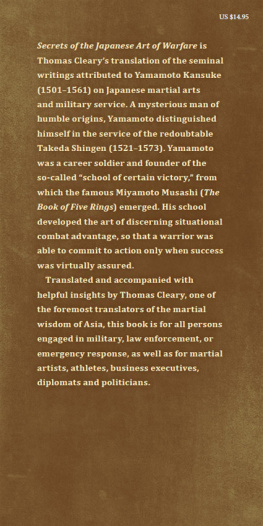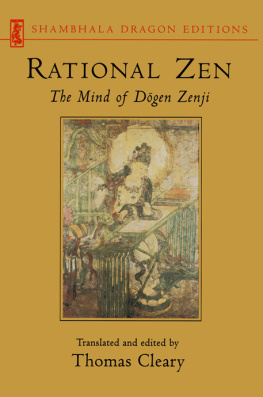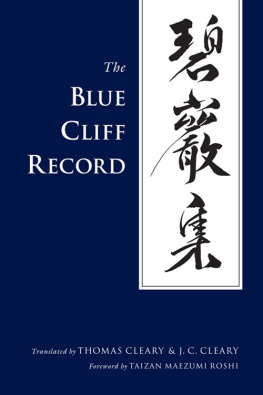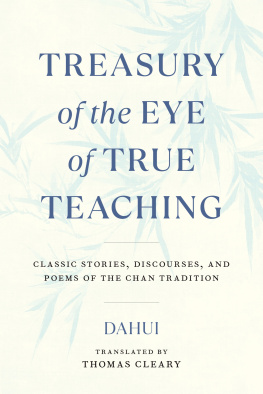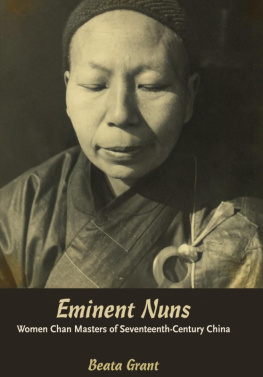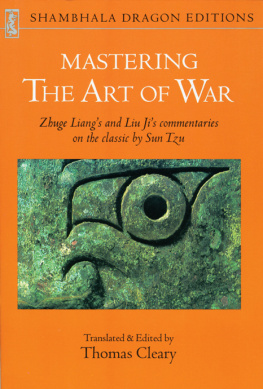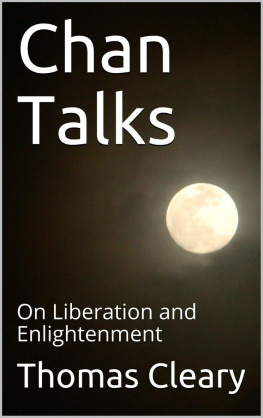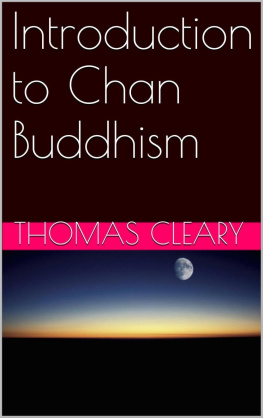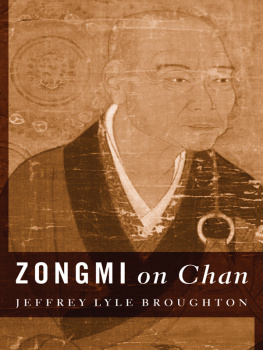Thomas Cleary - Chan Instructions
Here you can read online Thomas Cleary - Chan Instructions full text of the book (entire story) in english for free. Download pdf and epub, get meaning, cover and reviews about this ebook. year: 2016, genre: Religion. Description of the work, (preface) as well as reviews are available. Best literature library LitArk.com created for fans of good reading and offers a wide selection of genres:
Romance novel
Science fiction
Adventure
Detective
Science
History
Home and family
Prose
Art
Politics
Computer
Non-fiction
Religion
Business
Children
Humor
Choose a favorite category and find really read worthwhile books. Enjoy immersion in the world of imagination, feel the emotions of the characters or learn something new for yourself, make an fascinating discovery.

- Book:Chan Instructions
- Author:
- Genre:
- Year:2016
- Rating:5 / 5
- Favourites:Add to favourites
- Your mark:
- 100
- 1
- 2
- 3
- 4
- 5
Chan Instructions: summary, description and annotation
We offer to read an annotation, description, summary or preface (depends on what the author of the book "Chan Instructions" wrote himself). If you haven't found the necessary information about the book — write in the comments, we will try to find it.
Chan Instructions — read online for free the complete book (whole text) full work
Below is the text of the book, divided by pages. System saving the place of the last page read, allows you to conveniently read the book "Chan Instructions" online for free, without having to search again every time where you left off. Put a bookmark, and you can go to the page where you finished reading at any time.
Font size:
Interval:
Bookmark:
Chan Instructions
Translated by Thomas Cleary
Introduction
The Dhammapada, an early collection of sayings attributed to the Buddha, begins with a statement of the central practical concern of Buddhism: Everything has mind in the lead, has mind in the forefront, is made by mind. If one speaks or acts with a corrupt mind, misery will follow, as the wheel of a cart follows the foot of the ox. Everything has mind in the lead, has mind in the forefront, is made by mind. If one speaks or acts with a pure mind, happiness will follow, like a shadow that never leaves.
Given this observation, purifying the mind is a primary purpose of Buddhist practice; the Dhammapada goes on, The mind is restless, unsteady, hard to guard, hard to control. The wise one makes it straight, like a fletcher straightens an arrow.. Let the wise one watch over the mind, so hard to perceive, so artful, alighting where it wishes; a watchfully protected mind brings happiness.
Many methods of mastering the mind were adopted and developed by Buddhists over the ages, as were many methods of fostering and expressing its latent or attenuated faculties of communication and constructive creativity. With the massive importation of accumulated Buddhist literature into China over a span of several centuries, the original organic evolution of teachings and practices became obscure, sparking attempts at systematization to clarify the relationship of different scriptures and the role of different doctrines in addressing a range of human needs and capacities. In time these efforts gave rise to what came to be known as schools of Buddhism.
The transmission of Buddhism to China was also complicated by the linguistic issues involved in translation of scriptures and treatises from Sanskrit to Chinese. These languages are grammatically very different, and so are the cultural contexts that gave rise to their conceptual constructs and the vocabularies used to represent them. Standard literary Chinese itself changed from dynasty to dynasty over the course of the centuries, and the development of distinctive Buddhist Chinese also produced considerable variation in structure and terminology. These factors eventually produced a type of Buddhist scholarship devoted to efforts to elucidate the overt meanings of texts on the basis of Chinese renderings without reference to the original Sanskrit. Literalists in this field were affected by longstanding habits of Confucian academics, while their interpretations of Buddhist symbolism were liable to be obscured by the influence of ambient tendencies toward interest in the supernatural.
Emerging several hundred years after the introduction of Buddhism into China, what was to become known as the Chan school worked to surmount these obstacles to understanding by focusing on the practical problems of mental purification, treating the written teachings as specific expedients rather than sacred dogma, and following the mainstream Buddhist principle rely on the meaning, not the word. The original projection of Chan in China is associated with the scripture known as the Lankavatara sutra, which presents these principles of application:
The teachings indicated in all the scriptures are appeasements for subjective imaginations of ignorant people, not disputation intended to establish ultimate knowledge as it is in reality. Therefore one should follow meaning, not adherence to the expression of teachings.
Ultimate truth is not a statement, nor is ultimate truth what is expressed by a statement.
The leading principle of the goal is distinguished by first-hand experience, beyond speech, imagination, and words, reaching the realm where there is no impulse, the inherent characteristic of arrival at the stage of first-hand realization, excluding all the destructive forces of speculation and dogmatism.
The leading principle of instruction is discerning accommodation to peoples conditions.
The teachings are not literal, and yet Buddhas do not present them for no reason. They present them in consideration of mental construction. Without material to use, instruction in all the teachings would disappear.. The great bodhisattvas should be free of obsession with the articulation of the recital of teaching. The recital of teaching has different meanings on account of the engagement of peoples mentalities.
Just as if someone points out something to someone with a finger, and the latter looks only at the fingertip, in the same way ignorant ordinary people, as if of infantile disposition, will go to their death adhering to the fingertip of meaning as articulated, and will not arrive at the ultimate meaning beyond the fingertip of expression.. Just as the ignorant one fixated on the pointing fingertip does not apprehend the moon, so does one attached to the letter not know my truth.
As a physician prescribes the type of treatment according to the illness, and there is no division in the science but treatment is distinguished by the type of illness, so do I teach the family of beings according to the afflictions with which they are troubled, after having ascertained the powers of beings capacities.
These principles are reflected throughout the recorded teachings of the classical era of Chan, but the transmission of the Lankavatara sutra faded out after several generations. According to Biographies of Eminent Monks, the founder of Chan in China, an Indian monk named Bodhidharma, recommended this scripture to his foremost successor Huike, but whenever Huike lectured on the teaching he would conclude by saying that After four generations this scripture will turn into terminology and definition. One reason for this may lie in the poor quality of the Chinese version they used, which could not be interpreted correctly without reference to Sanskrit.
According to the Song dynasty Buddhist writer Wang Rixiu, Although Bodhidharma promoted that writing in the East, it was translated very obscurely, and is hard to read and hard to understand. Born in a Brahmin family in India, Bodhidharma would have understood the original Sanskrit text and been able to transmit the meaning to Huike, but oral tradition evidently faded over time, and later Chinese commentators on this translation were unable to elucidate problematic passages and confused critical terms. By the time of the fifth patriarch of Chan, the main scriptural reference for the teaching had shifted to the Vajracchedika or Diamond Cutter sutra.
The Diamond Cutter is one of the shorter texts of a corpus of scriptures on transcendent insight, a primary focus of Chan. Like the later Lankavatara, it emphasizes the practical nondogmatic character of Buddhism: There is no fixed state called unexcelled complete perfect enlightenment, and there is no fixed doctrine for the Realized One to preach. According to an account attributed to the famous sixth patriarch of Chan, he was moved to seek out the fifth patriarch, who was to become his teacher, after hearing this scripture being recited one day when he was selling firewood in a marketplace. The same narrative relates that when the fifth patriarch was expounding the Diamond Cutter to him, the future sixth patriarch had an overwhelming realization on hearing the passage, Activate the mind without dwelling on anything.
After the future sixth patriarch related his understanding that inherent nature is originally intrinsically pure, the story continues, the fifth patriarch summarized the essence of Chan for him in these terms: If one does not discern the original mind, it is of no benefit to study the teaching. If you discern your own original mind and see your own original essential nature, you are what they call a great man, a teacher of humans and celestials, a Buddha.
The sixth patriarch eventually became a famous teacher, with many enlightened disciples. Based on his own experience, he maintained the possibility of sudden enlightenment, though the processes of preliminary preparation and post-enlightenment maturation might require prolonged practice. According to a story illustrating this, when the patriarchs disciple Huairang first came to him, the patriarch asked him where he had come from. Huairang named the place he had come from, but then the patriarch asked, What is it that has come thus? After eight years of introspection, Huairang answered To liken it to something would miss. The patriarch asked, Can it be cultivated and realized? He said, Cultivation and realization are not nonexistent, but if tainted they wont succeed. The patriarch said, Just this not tainting is what all Buddhas keep in mind.
Next pageFont size:
Interval:
Bookmark:
Similar books «Chan Instructions»
Look at similar books to Chan Instructions. We have selected literature similar in name and meaning in the hope of providing readers with more options to find new, interesting, not yet read works.
Discussion, reviews of the book Chan Instructions and just readers' own opinions. Leave your comments, write what you think about the work, its meaning or the main characters. Specify what exactly you liked and what you didn't like, and why you think so.

